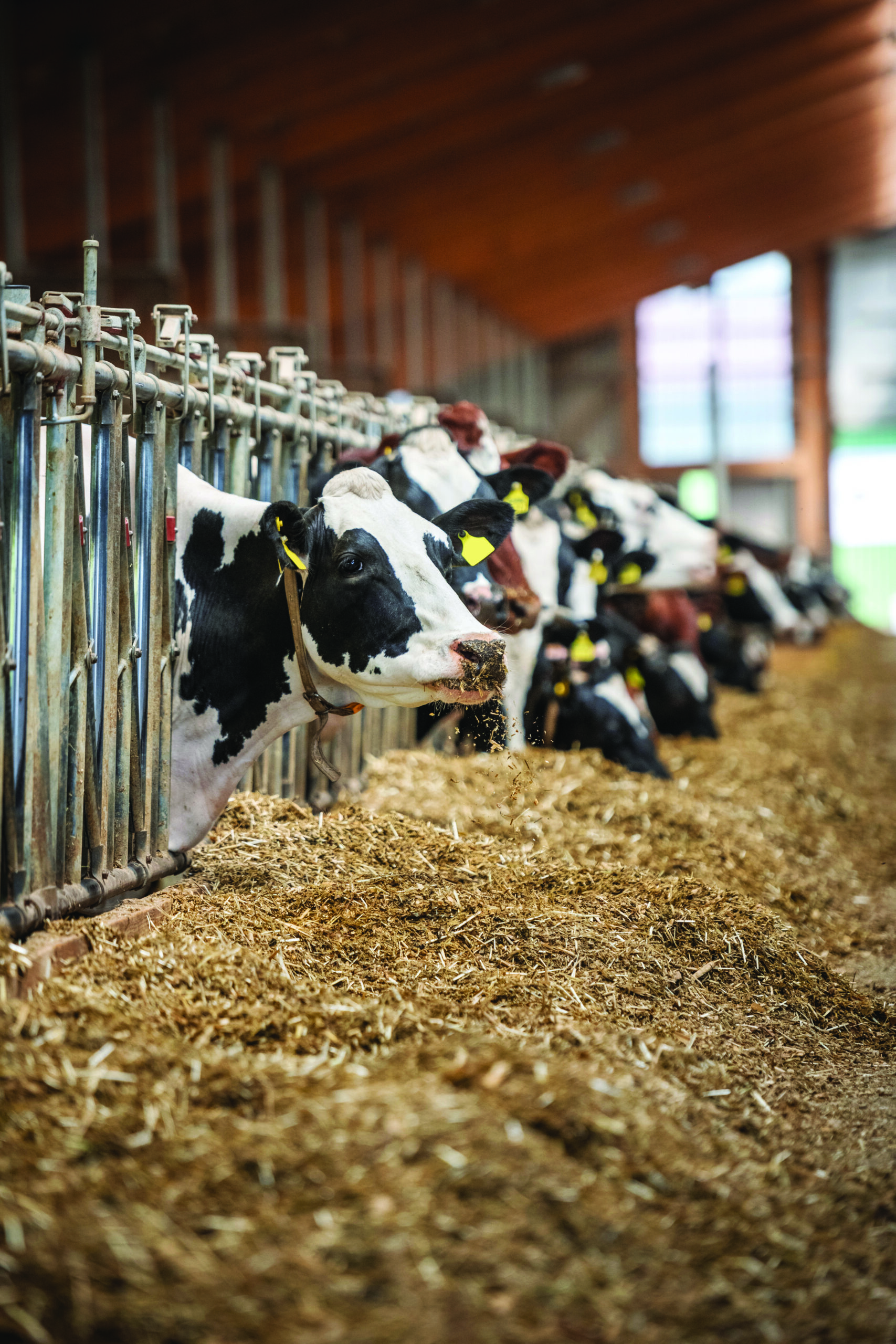This FAQ document was funded by the National Soybean Checkoff and is based on research plus real-world commercial experience. It represents the collective and collaborative efforts of the following dairy-industry leaders:
• Corwin Holtz, MSc., Holtz Nelson Dairy Consultants
• Lynn Davis, Ph.D., Quality Roasting, Inc., Nutrition, Professionals Inc., Breeze Dairy Group, LLC
• Jim Barmore, MSc., PAS, Five Star Dairy Consulting
• Stacy Nichols, MSc., Vita Plus Corporation
• Chuck Nicholson, Ph.D., University of Wisconsin
• Adam Lock, Ph.D., Michigan State University
• Kevin Harvatine, Ph.D., Pennsylvania State University
Purpose
The goal of this document is to bring awareness to key considerations when evaluating high oleic soy as an ingredient for dairy cow rations.
High oleic soybeans are a variety of soybean high in oleic acid, at least 70%. Conventional soybeans contain about 22-28% oleic acid. The fatty acid profile, specifically the high oleic acid content, makes high oleic soybeans a unique feed ingredient.
Heat-treated high oleic soy offers both fat and bypass protein, improving the energy density of the diet. However, the benefits of the bypass protein are dependent on the control and consistency of heat treatment.
There are many factors and considerations when evaluating heat-treated high oleic soy from growing to processing through feeding. High oleic soy has the opportunity to be a valuable feed ingredient included in dairy cow rations, and understanding how to successfully implement it is key.
Table of Contents
Feeding High Oleic Soybeans……………………………………………………….p3
Roasting and Heating of High Oleic Soybeans……………………………p7
Growing High Oleic Soybeans………………………………………………………p9
Checkoff Compliance…………………………………………………………………….p11
